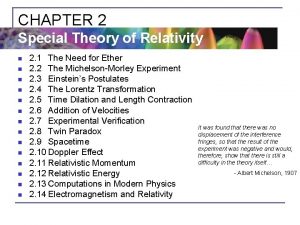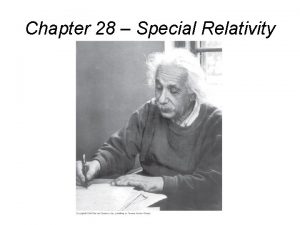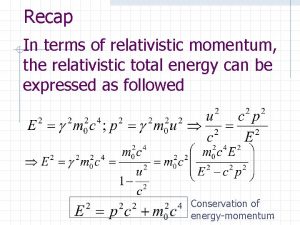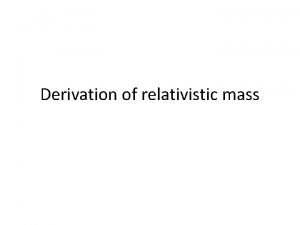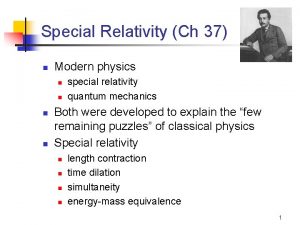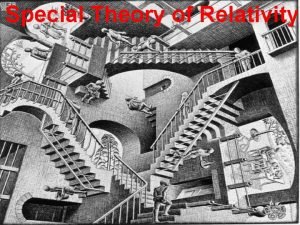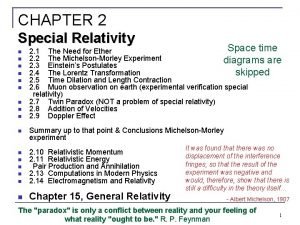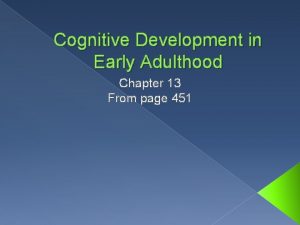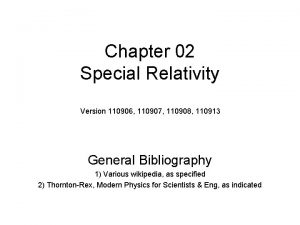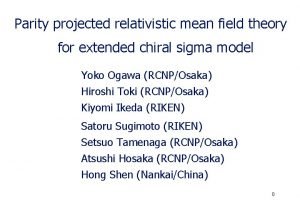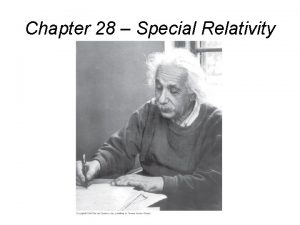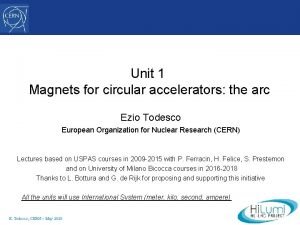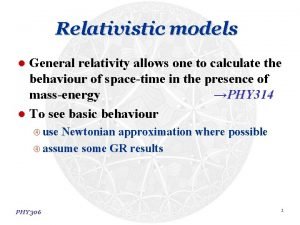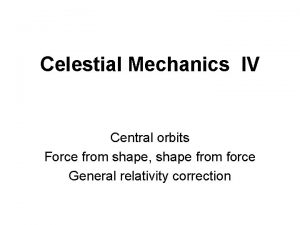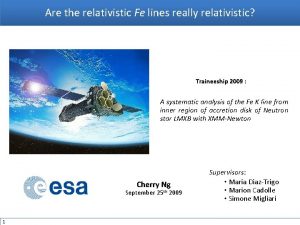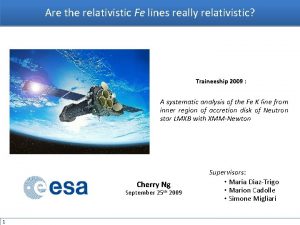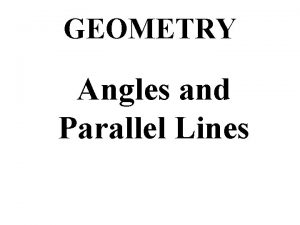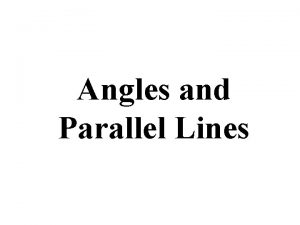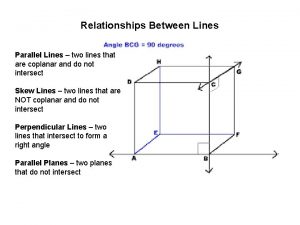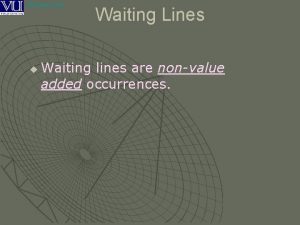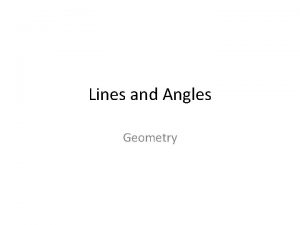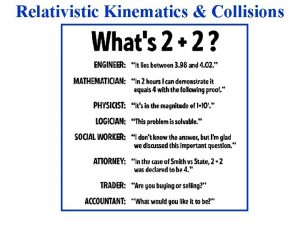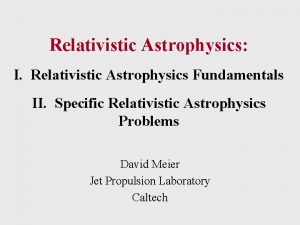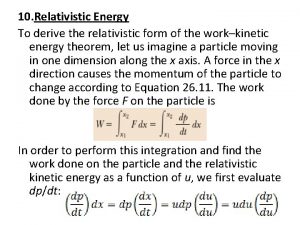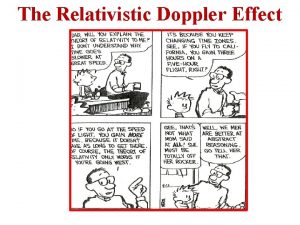Are the relativistic Fe lines really relativistic Traineeship

























- Slides: 25

Are the relativistic Fe lines really relativistic? Traineeship 2009 : A systematic analysis of the Fe K line from inner region of accretion disk of Neutron star LMXB with XMM-Newton Cherry Ng September 24 th 2009 1 Supervisors: • Maria Diaz-Trigo • Marion Cadolle • Simone Migliari

Outline 1. Objectives Fe K emission line Inner region of the accretion disk 2. Data analysis Importance of pile-up treatment 3. Results Relativistic Fe K line ? 4. Conclusion 2 Outline

Neutron Star Low-mass X-ray binaries (NS LMXB) Roche-lobe overflow Low-mass star Weakly magnetized NS Accretion disk • Fe K emission line • Typical energy : ~ 6. 5 ke. V 3 Objectives

Neutron Star Low-mass X-ray binaries (NS LMXB) Cackett et al (2008) Ap. J 674: 415 -420 Roche-lobe overflow Low-mass star Weakly magnetized NS Accretion disk • Fe K emission line • Typical energy : ~ 6. 5 ke. V 3 Objectives

Neutron Star Low-mass X-ray binaries (NS LMXB) • Systematic analysis • All publicly available bright Neutron Star LMXB • XMM-Newton 26 observations 17 sources 4 Objectives

Treatment of Pile-up No. of counts normalized to 1 Single & Double-px event pattern plot of Ser X 1 • Common problem of bright sources • 2 photons of lower energy read as 1 photon of higher energy • Distortion of spectra 5 Data analysis

Treatment of Pile-up No. of counts normalized to 1 Single & Double-px event pattern plot of Ser X 1 Single-px event Double-px event • Common problem of bright sources • 2 photons of lower energy read as 1 photon of higher energy • Distortion of spectra 5 Data analysis

Treatment of Pile-up No. of counts normalized to 1 Single & Double-px event pattern plot of Ser X 1 Comparison of Ser X 1 spectra before and after pile-up removal Single-px event Double-px event • Common problem of bright sources • 2 photons of lower energy read as 1 photon of higher energy • Distortion of spectra 5 Data analysis

Treatment of Pile-up No. of counts normalized to 1 Single & Double-px event pattern plot of Ser X 1 Comparison of Ser X 1 spectra before and after pile-up removal Single-px event Excess emission Double-px event Before pile-up removal After pile-up removal • Common problem of bright sources • 2 photons of lower energy read as 1 photon of higher energy • Distortion of spectra 5 Data analysis

Evolution of spectrum fit abs ( gaussian +diskbbody+bbodyrad + Fe K line ) +gaussian calib 1. 84 ke. V calib 2. 28 ke. V Emission 1 ke. V 6 Data analysis

Evolution of spectrum fit abs ( gaussian +diskbbody+bbodyrad + Fe K line ) +gaussian calib 1. 84 ke. V calib 2. 28 ke. V Emission 1 ke. V 6 Data analysis

Evolution of spectrum fit abs ( gaussian +diskbbody+bbodyrad + Fe K line ) +gaussian calib 1. 84 ke. V calib 2. 28 ke. V Emission 1 ke. V 6 Data analysis

Evolution of spectrum fit abs ( gaussian +diskbbody+bbodyrad + Fe K line ) +gaussian calib 1. 84 ke. V calib 2. 28 ke. V Emission 1 ke. V 6 Data analysis

Evolution of spectrum fit abs ( gaussian +diskbbody+bbodyrad + Fe K line ) +gaussian calib 1. 84 ke. V calib 2. 28 ke. V Emission 1 ke. V 6 Data analysis

Evolution of spectrum fit abs ( gaussian +diskbbody+bbodyrad + Fe K line ) +gaussian calib 1. 84 ke. V calib 2. 28 ke. V Emission 1 ke. V 6 Data analysis

Evolution of spectrum fit abs ( gaussian +diskbbody+bbodyrad + Fe K line ) +gaussian calib 1. 84 ke. V calib 2. 28 ke. V Emission 1 ke. V 6 Data analysis

Evolution of spectrum fit abs ( gaussian +diskbbody+bbodyrad + Fe K line ) +gaussian calib 1. 84 ke. V calib 2. 28 ke. V Emission 1 ke. V 6 Data analysis

Evolution of spectrum fit abs ( gaussian +diskbbody+bbodyrad + Fe K line ) +gaussian calib 1. 84 ke. V calib 2. 28 ke. V Emission 1 ke. V 6 Data analysis

Gaussian & Laor comparison on 4 U 1543 -62 Gaussian Laor 7 Data analysis

Gaussian & Laor comparison on 4 U 1543 -62 Gaussian Laor 7 Data analysis

Gaussian & Laor comparison on 4 U 1543 -62 Gaussian Laor Energy : Sigma : 0. 33± 0. 13 Laor index : 0. 97 Inclination : EW : Reduced X² : Rin: EW : Reduced X² : 7 32 ± 9 e. V 0. 96 Data analysis

Gaussian & Laor comparison on 4 U 1543 -62 Gaussian Laor Energy : Sigma : 0. 33± 0. 13 Laor index : 0. 97 Inclination : EW : Reduced X² : Rin: EW : Reduced X² : 32 ± 9 e. V 0. 96 • Narrow line width • Small inner radius • Similar X² • Insignificant evidence of asymmetric profile 7 Data analysis

Comparing results with published data 8 Results

Statistics on equivalent width 9 Results

Conclusion • Relativistic origin for the broadening of Fe cannot be claimed • Further higher resolution spectroscopic data needed --> to place better constraints on possible contribution to the line emission from various parts of disk Thank you ! 10 Conclusion
 Mikael ferm
Mikael ferm Flanders traineeship platform
Flanders traineeship platform Apprenticeship and traineeship act 2001
Apprenticeship and traineeship act 2001 Traineeship klimaat
Traineeship klimaat European court of human rights traineeship
European court of human rights traineeship Burness paull traineeship
Burness paull traineeship Trainee european commission
Trainee european commission Kit dello studente erasmus unige
Kit dello studente erasmus unige European space agency jobs
European space agency jobs Relativistic kinetic energy
Relativistic kinetic energy Relativistic thinking example
Relativistic thinking example A physical education chapter 28
A physical education chapter 28 Relativistic momentum
Relativistic momentum Relativistic mass derivation
Relativistic mass derivation Relativistic momentum
Relativistic momentum Relativistic mass formula
Relativistic mass formula Kinetic energy of a relativistic particle
Kinetic energy of a relativistic particle Early adulthood cognitive development
Early adulthood cognitive development Cognitive-affective complexity
Cognitive-affective complexity Bertrand postulate
Bertrand postulate Relativistic kinetic energy
Relativistic kinetic energy Relativistic mean field theory
Relativistic mean field theory Relativistic kinetic energy
Relativistic kinetic energy Relativistic circular motion
Relativistic circular motion General relativity formula
General relativity formula Site:slidetodoc.com
Site:slidetodoc.com









